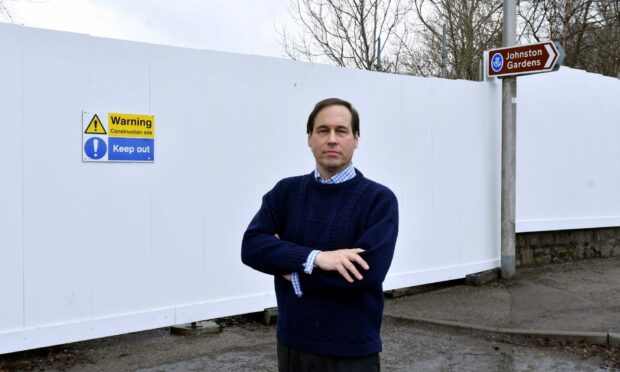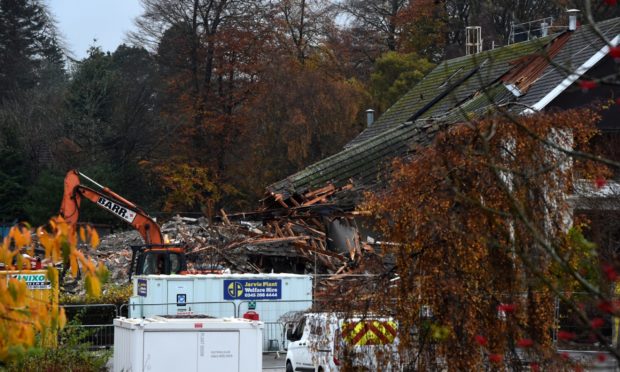Neighbours say building work on a former Aberdeen hotel has become so loud they have taken to wearing earplugs.
Residents living close to the bulldozed Hilton Treetops in Springfield Road had taken issue with the din and the shaking caused by the heavy machinery.
But Aberdeen City Council said developer Malcolm Allan Housebuilders has no case to answer – and will not be pushing for the hours of site operations to be reduced.
The Kintore construction firm last month revealed plans, at a very early stage, for up to 95 homes within the footprint of the once-salubrious inn.
Months of complaints over noise from Hilton Treetops site
In February, residents complained about noise coming from the demolition site, causing environmental health officers to test noise levels.
From two vantage points within adjacent Craigieburn Place on two separate occasions, the investigators found noise to be within acceptable limits.
Hazlehead, Queen’s Cross and Countesswells councillor Martin Greig, who brought the concerns forward, said: “I have had many complaints since September about the noise and reverberation caused by the Treetops demolition work.
“The noise echoes and penetrates from 7am to 7pm on weekdays and from 8am-1pm on Saturdays.
“Children are disturbed at bedtime and people working from home have had to move rooms and close windows.
“Shift workers are troubled, some have to use earplugs; the noise has been constant and very loud.
“The council investigated but found that the record of noise levels were not sufficient to take action – although close to it.”
After investigating, environmental health officers said they would not seek to vary the working hours on site.
Despite readings during their site visits being close to the maximum 65 decibels, the laws permit noise levels to go over, so long as they remain below the top limit on average over a 12-hour day.
‘Perceived benefit’ of shorter working days balanced against prolonged disruption
A spokesman said: “Noise emissions from the site were considered to have some impact on amenity due to proximity.
“As the limits are a 12-hour average this would allow for periods of higher noise emissions if balanced with quiet periods which appeared to be the case due to work breaks and stoppages of equipment, along with periodic relocating of equipment to different positions around the site with varying levels of noise impact at sensitive receptors.
“In relation to loud bangs and crashing noises during the day, there is no daytime maximum standard for acute noise incidents, unlike the night-time.
“Based on the above, the environmental health service will not be seeking to vary recommended hours of operation.
“Any contractor on site will be required to demonstrate compliance with the above mentioned standard. Complaints of noise disturbance thought to be in excess of the standard can be investigated on a case-by-case basis.”
The spokesman added that any “perceived benefit” of shorter working days would need to be balanced against the downside of disruption lasting longer overall.

